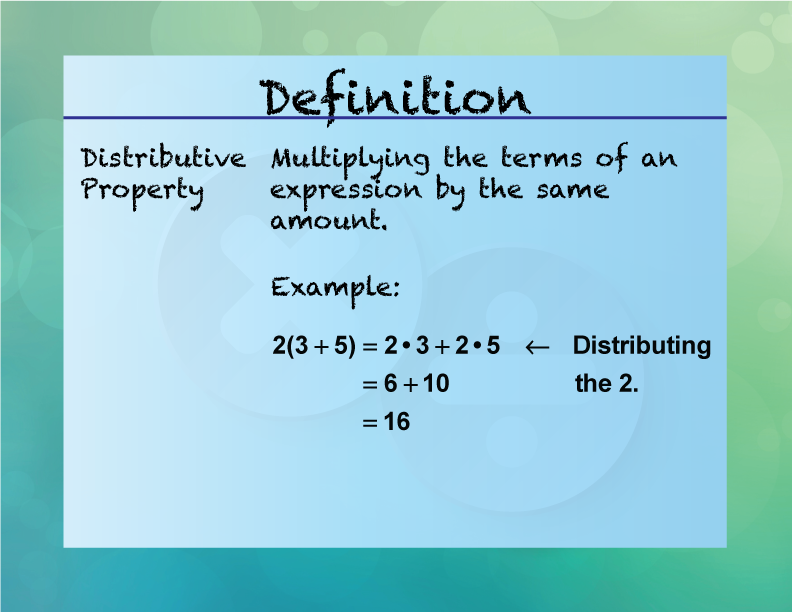
Display Title
Elementary Definition--Multiplication and Division Concepts--Distributive Property
Display Title
Distributive Property

Topic
Multiplication and Division
Definition
The distributive property states that multiplying a sum by a number is the same as multiplying each addend by the number and then adding the products.
Description
The distributive property is a crucial concept in algebra and arithmetic, which states that
a(b + c) = ab + ac
This property allows for the simplification of complex expressions and is widely used in solving equations and algebraic manipulations. For example, to multiply 3 by the sum of 4 and 5, you can distribute the 3 to get 3 × 4 + 3 × 5, which simplifies to 12 + 15, resulting in 27. In real-world applications, the distributive property is used in areas such as engineering, economics, and computer science to optimize calculations and processes. Understanding this property helps students break down complex problems into manageable parts and enhances their problem-solving skills.
Teacher script: "Imagine you have 3 bags, each with 4 apples and 5 oranges. You can count all the apples first and then all the oranges, or you can count each bag's total and add them up. Either way, you get the same total number of fruits."
For a complete collection of terms related to Multiplication and Division click on this link: Multiplication and Division Collection
| Common Core Standards | CCSS.MATH.CONTENT.4.OA.B.4, CCSS.MATH.CONTENT.3.OA.C.7, CCSS.MATH.CONTENT.3.OA.B.5 |
|---|---|
| Grade Range | 2 - 4 |
| Curriculum Nodes |
Arithmetic • Multiplication • Multiplication Expressions and Equations |
| Copyright Year | 2021 |
| Keywords | multiplication, division, equation |